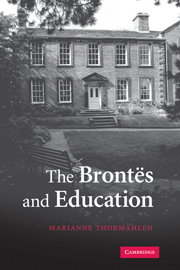Book contents
- Frontmatter
- Contents
- Acknowledgements
- Abbreviations and editions
- Introduction
- I EDUCATION AND SOCIETY
- II HOME AND SCHOOL
- 3 Household education versus school training
- 4 Parents and children
- 5 Professional educators in the home
- 6 Schools and schooling
- III SUBJECTS AND SKILLS
- IV STRATEGIES AND METHODS
- V ORIGINALITY AND FREEDOM
- Notes
- Select bibliography
- Index
4 - Parents and children
Published online by Cambridge University Press: 22 September 2009
- Frontmatter
- Contents
- Acknowledgements
- Abbreviations and editions
- Introduction
- I EDUCATION AND SOCIETY
- II HOME AND SCHOOL
- 3 Household education versus school training
- 4 Parents and children
- 5 Professional educators in the home
- 6 Schools and schooling
- III SUBJECTS AND SKILLS
- IV STRATEGIES AND METHODS
- V ORIGINALITY AND FREEDOM
- Notes
- Select bibliography
- Index
Summary
Apart from the desirability of formal schooling experience for any woman who wished to go on to teach professionally, there was another powerful reason why the Brontë girls could not be educated exclusively at home: there was no mother in it. Time and again, writers on education in the early and mid-nineteenth century pointed out that the mother was the natural teacher of her children. Above all, they were to receive their decisive early religious instruction at her hands.
Even if the Brontë children's mother had survived, it is hard to see how she could have found time to teach her daughters, at different ages and stages, on a regular basis. Her sister, whose educational attainments are likely to have resembled hers, taught young Anne and gave all the girls some instruction in sewing. Even those undertakings seem extensive in view of her responsibilities in the household. Though neither unintelligent nor uneducated, Aunt Branwell could never have assumed the role of main teacher to the intellectually ambitious adolescent girls. As their father was busy with his manifold professional duties and with Branwell's education, the resources of their home were plainly insufficient for them. Self-study and occasional attendance at lectures could not fill the gap: some sort of schooling was the obvious answer.
PRINCIPLES IN THE REARING OF CHILDREN
Education, however, is more than the acquisition of knowledge and skills, and all writers on education in the late eighteenth and early nineteenth century emphasised that a child's character was formed at home.
- Type
- Chapter
- Information
- The Brontës and Education , pp. 37 - 47Publisher: Cambridge University PressPrint publication year: 2007



